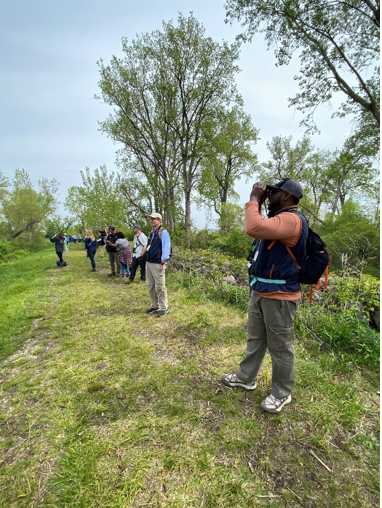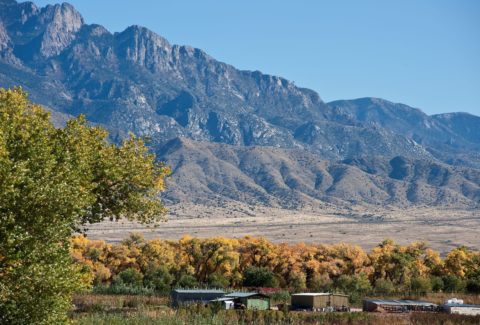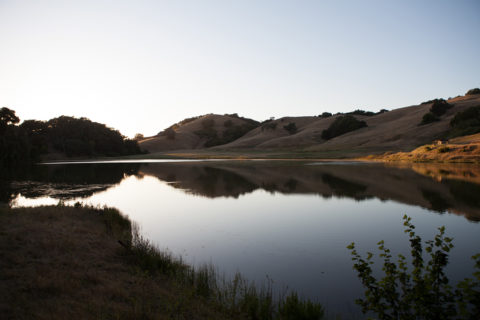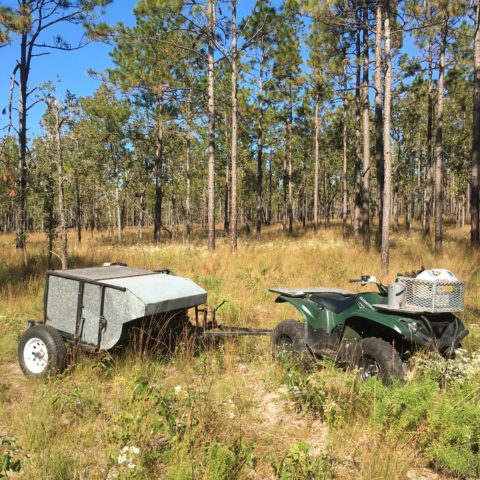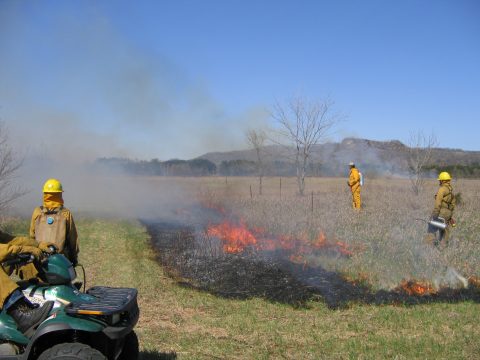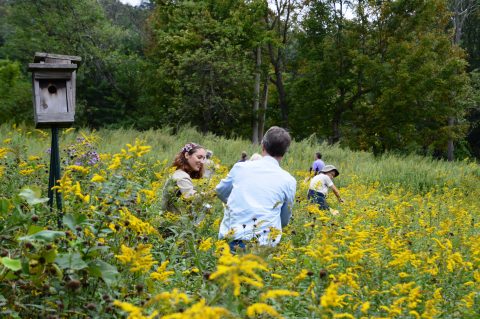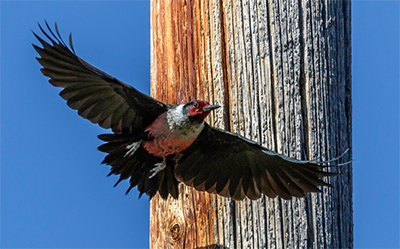2021 Small Grant Awardees
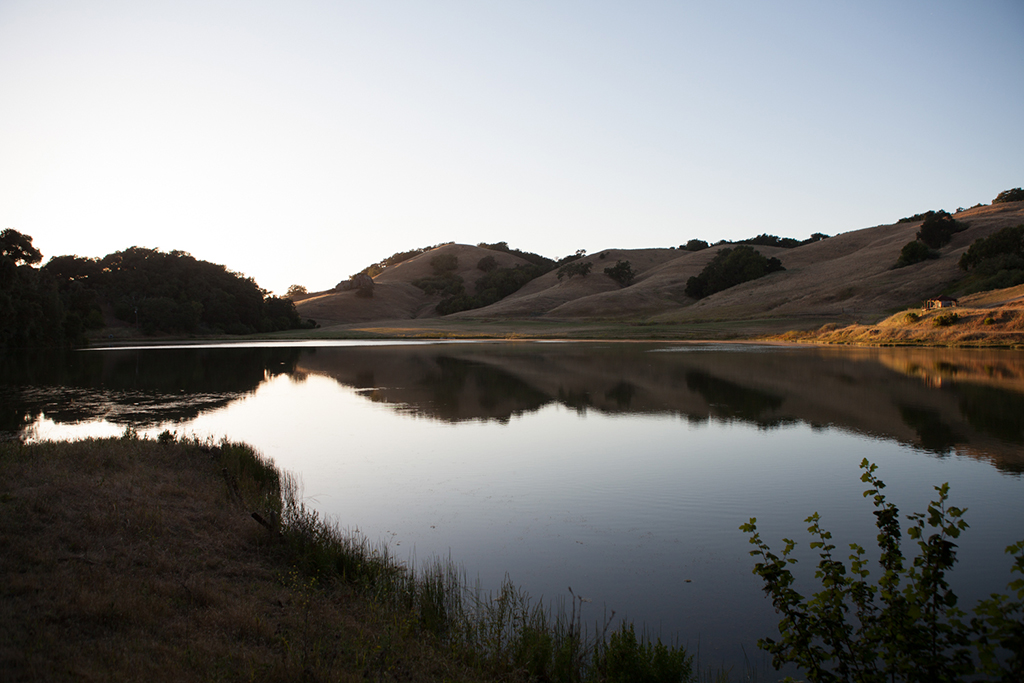
We are thrilled to announce the Cornell Land Trust Grant awardees for 2021. With support from our generous sponsors the program was able to award $255,000 to 14 land trusts throughout the country to assist awardees with management and restoration of private protected lands, support land acquisition costs and stewardship, integrate bird conservation and tools into prioritization and planning, and develop partnerships within the birding community to amplify conservation efforts. The next request for proposals will open in January 2022.
Land Conservancy of San Luis Obispo County (California), $50,000
A new Cornell Land Acquisition Grant will allow the Land Conservancy of San Luis Obispo County (LCSLO) to offset some of the cost of its recently-purchased Santa Rita Ranch as well as improve and steward the ranch’s habitat for birds and other wildlife. A variety of habitats make up the ranch’s 1,700 acres, including a 230-acre freshwater reservoir, the fourth largest privately-owned reservoir in San Luis Obispo County. This remarkable property with its stately valley oaks and serpentine grasslands sits at the top of the southern Santa Lucia Range and forms the upper watershed of Santa Rita Creek. It hosts abundant wildlife with recent surveys documenting more than 150 animal species, including 106 species of birds, and more than 500 plant species. “Prior to our purchase, the ranch could have been split into a minimum of five separate properties,” says Kyle Walsh, LCSLO’s conservation director. “Each property would have been allowed to contain more than three or more residences. Protecting the Santa Rita enhances the benefits of nearby protected lands and helps wildlife move between blocks of designated wilderness in San Luis Obispo and Monterey Counties.” The long-term goal for this acquisition is to reestablish native vegetation and wildlife habitat along the ranch’s lake, streams, and wetlands. The property will continue to be managed as a sustainable cattle ranch to help mitigate fire risk and a wildlife preserve to protect a critical wildlife corridor through the county’s north coast. Future activities include nature education and limited recreational opportunities for the public.
Dauphin Island Bird Sanctuaries (Alabama), $25,000
The Dauphin Island Bird Sanctuaries, Inc. (DIBS) works to maintain a network of quality stopover bird habitats, educate landowners about practices that strengthen the barrier island’s unique ecosystem, and ensures a balance between human land uses and conservation. The Dauphin Island Bird Sanctuaries Habitat Management Project will focus on two habitat types, the Tupelo Gum Swamp and the Back-Barrier Dune and Marsh habitats, identified as most important for conservation and management of resilient landscapes by the Alabama Barrier Island Restoration Assessment released in 2020. DIBS plans to engage the Gulf Corp Student Conservation Association (SCA) to help with the implementation of habitat management activities giving young conservationists hands-on service training and building capacity for the organization. They will train SCA crew members in bird monitoring techniques and monitoring plan composition, map and monitor Cogongrass and Tallow Tree infestation on DIBS properties to track metrics for control measures, treat all acres of mapped invasives to create better food sources and refuge for migratory birds and associated species, survey properties pre and post restoration and submit fall and spring bird counts to ebird, and create two demonstrations sites for outreach to private landholders and for stewardship fundraising efforts. Meg Goecker, a DIBS board member says, “As a small all-volunteer land trust, the support of the Cornell Land Trust Small Grant is essential in helping us jump start the proper management of our properties to better support habitat for migrating birds and allowing us to demonstrate to surrounding communities how to manage their properties in concert with protected lands.”
Kennebec Estuary Land Trust (Maine), $25,000
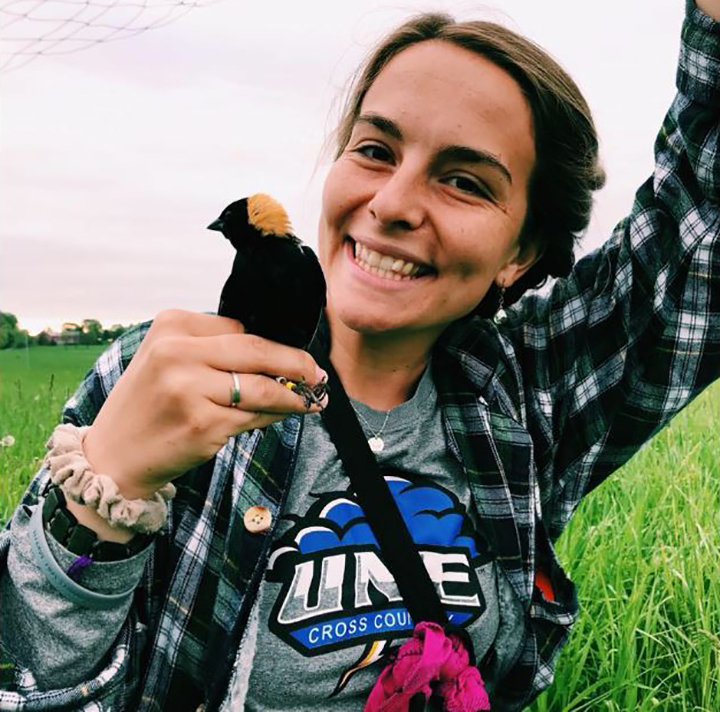
The Kennebec Estuary Land Trust (KELT) is partnering with Ag Allies, a project of the Somerset County Soil and Water Conservation District, to protect Maine’s grassland birds one field at a time. The Expanding Grassland Bird Education and Conservation in Maine project focuses on utilizing Maine’s sophisticated network of land trusts to inform grassland bird-friendly land management practices. The unique expertise of KELT and Ag Allies staff brings a dynamic project that will provide technical and financial support to land trusts, farmers, and other landowners who manage grasslands and are open to protecting vulnerable bird species, like Bobolinks, in the process. “Because Bobolinks and other grassland birds breed in agricultural habitats but are extremely vulnerable to disruption by farm equipment, grazing animals, and humans during the nesting season, they present an interesting dynamic to maneuver,” says Maeve McGowan, KELT’s Land and Development Coordinator, “However, managing a field for commercial harvesting and for grassland bird conservation is very doable! Our goal is to provide landowners and land trusts with the support needed to make grassland bird-friendly management practices both possible and productive, for the birds and farmers alike.” Project staff will help landowners to navigate harvesting hay, improving soil quality, managing invasive species, and maintaining public access to open space while protecting breeding populations of Bobolinks, Savannah Sparrows, and other grassland birds. They will also work with partnering land trusts and other organizations to offer educational opportunities to the public, including workshops, guided walks, and lectures on grassland birds, sustainable management, and programs such as eBird. “This generous support from the Cornell Lab will empower KELT to enhance the important work of Ag Allies and help extend it to all corners of our state. We deeply appreciate the opportunity to contribute to the conservation of remarkable birds.”
Piedmont Environmental Council (Virginia), $25,000
Piedmont Environmental Council, the Smithsonian’s Virginia Working Landscapes, American Farmland Trust, and Quail Forever are partnering to address the ongoing decline of grassland bird populations in northern Virginia through the launch of the Virginia Grassland Bird Initiative (VGBI). Native grasslands have suffered the most intense impact by humans of any North American terrestrial ecosystems, and many remaining grassland birds have now adapted to using hayfields and pasturelands as surrogate habitat. With 90% of these surrogate grasslands in Virginia held in private hands, the onus for grassland bird conservation falls largely on private landowners. VGBI will work with landowners and producers to implement a suite of best management practices on working landscapes with the following goals: (1) stem the tide of grassland bird decline, (2) improve the resiliency of working landscapes, (3) and positively impact the livelihoods that depend upon those lands. With support from the Cornell Land Trust Bird Conservation Initiative, VGBI will create an incentives program for livestock producers to encourage the creation of more acreage for summer stockpiling, a system that excludes grazing from a portion of pasture acres during spring and summer in order to store forage for late-summer and early-fall, resulting in grass fields being left completely untouched from April through August during the grassland bird nesting season. They will build a portfolio of accepted management practices integrated with bird-friendly practices that will resonate with local producers and unify messaging across agricultural practitioners, work with producers on the ground to integrate these practices on the landscape, recruit and train citizen scientists to conduct breeding bird surveys using eBird, and interest new landowners and land trusts in the program through outreach events. Through resource and knowledge sharing, connectivity with cost-share programs, as well as hands-on support and training, VGBI looks to provide producers with the tools they need to continue pursuing a more sustainable path of land management practices.
Pines and Prairies Land Trust (Texas), $25,000
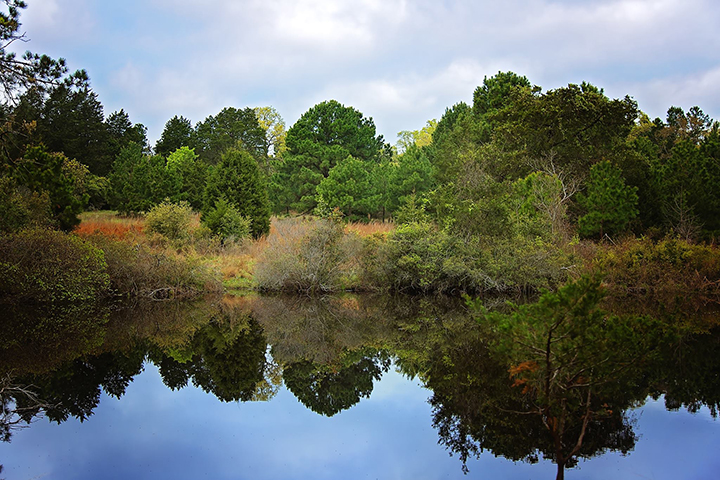
Pines and Prairies Land Trust (PPLT) owns the Yegua Knobbs Preserve (YKP), which consists of 302 acres of unique ecosystems that support many species of greatest conservation need in south-central Texas. The Oak-Pine Forest and Bog Restoration Project will restore and improve habitat not only for bird species that utilize this botanical hotspot, but for all other species of the East-Central Texas Plains Post Oak Savanna and Woodland ecoregion, including the critically endangered Houston toad. Most of the property is an oak-pine woodland that requires brush management and prescribed fire to maintain. A true, spring fed bog will benefit from prescribed fire as well as an adjacent, rare blowout sandy land ecosystem, both comprised of unique and rare plant species. This project will set up a brush management program with regular maintenance through a prescribed burn regime that is manageable long term for this small land trust and mimics the natural ecosystem. PPLT will continue breeding and wintering bird surveys started in 2017 using eBird, providing a useful baseline to monitor bird species and helping to evaluate the success of management. Once restoration is complete, PPLT will use YKP to teach and disseminate public programming to the community and hopes it will be considered a release site for endangered species endemic to this ecosystem, playing a role in critical species’ resiliency and recovery. Melanie Pavlas, PPLT’s Executive Director said, “Protecting birds and their habitat has always been a main driving force for the work we do on our preserves. From monitoring breeding and wintering populations to offering educational hikes and university research to minimizing impacts from our work, they have been a high priority. With the support from Cornell, we are able to restore habitat for them as well, and being able to provide quality habitat for the many bird species utilizing these ecosystems gives us a deeper sense of purpose and pride. After all, managing land for birds is managing land for all native plants and wildlife.”
Prairie Land Conservancy (Illinois), $25,000
Prairie Land Conservancy’s (PLC) restoration work on their 200-acre Wigwam Hollow Bird Sanctuary got underway in 2020, in part with mitigation funds from The Conservation Fund, managed in partnership with US Fish and Wildlife Service (USFWS). In fall 2020, USFWS biologists toured the Sanctuary to discuss plans to expand the prairie, remove invasive species, and enhance the site’s potential as a high value wildlife corridor in a region of extensive habitat fragmentation. The sanctuary abuts a 170-acre conservation easement (owned by PLC) and other protected lands nearby associated with the LaMoine River corridor. Like much of Illinois’ highly altered woodlands, the site is heavily overgrown with woody invasives such as high bush honeysuckle and honey locust trees. According to PLC’s Executive Director Dave King, “The grant from the Cornell Lab pushed us over the top in our fundraising for the Wigwam Hollow Bird Sanctuary Project and allows us to move forward with our plans to manage invasives, restore the oak-hickory forest, and expand the prairie. Once fully restored, the sanctuary will provide improved habitat and connectivity for birds, including many species identified in the Illinois Wildlife Action Plan as species in greatest conservation need.” Techniques used will include clearing, herbicide application, goatscaping, and planting a stabilizing cover crop. They will partner with avian experts to conduct breeding bird surveys using eBird and will collaborate with key community stakeholders to provide opportunities for community engagement, including educational events, birding, and volunteer workdays to educate the public about declining bird and bat populations. PLC has started to use the site as an outdoor classroom for instructors in various departments related to natural resources management at Western Illinois University. They envision the sanctuary becoming a showcase site to demonstrate the benefits of habitat restoration to local landowners.
Sacramento Valley Conservancy (California), $25,000
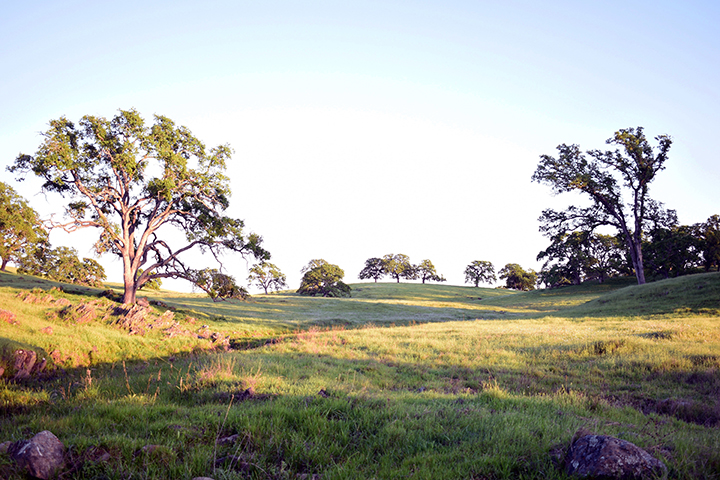
Deer Creek Hills Preserve is co-owned by the Sacramento Valley Conservancy (SVC), the County of Sacramento, and California Department of Parks and Recreation and Mother Lode Land Trust, encompassing 4,600-acres of blue oak woodland, annual grassland, and riparian habitat. SVC has managed the preserve, the only protected blue oak woodland open to the public in Sacramento and its bordering counties, on behalf of all parties since 2002. Without any dedicated public funding, SVC draws its operational budget exclusively from grazing revenue and private donations. The Habitat Enhancement and Rangeland Monitoring Project at Deer Creek Hills Preserve will improve habitat for three targeted species listed on the California Wildlife Action Plan, including Tricolored Blackbird, Burrowing Owl, and Loggerhead Shrike, and will benefit a number of other wildlife species. The project includes grassland, riparian, and oak woodland restoration and enhancement, and use of Rangeland Monitoring Network (RMN) protocols developed by Point Blue Conservation Science to evaluate the health of bird, plant, and soil communities within the preserve and guide future habitat management decisions. SVC will enhance pond habitat for future breeding Tricolored colonies, using volunteer service days to support burning and/or mechanical removal of thatch to promote new cattail and tule growth. Grassland work includes prescribed burns, spreading seed, and planting native bunch grasses, as well as construction of burrows to support an increased owl population. Annual bird monitoring programs using eBird, combined with soil and plant surveys, will be implemented in all habitat types to assess impacts of management activities and breeding success, benefits to rangeland health, and provide insight on how preserve resources can be maintained, altered, or further enhanced. These enhancements and surveys simply wouldn’t happen without funding granted by the Cornell Lab of Ornithology.
Wolf River Conservancy (Tennessee), $25,000
The Wolf River Cornerstone Habitat Restoration Project is located on two properties acquired by the Wolf River Conservancy (WRC) in 2016 and 2018 and subsequently added by the state of Tennessee to the Ghost River State Natural Area. The Ghost River State Natural Area and the adjoining Wolf River Wildlife Management Area are designated as an Important Bird Area by Audubon, are rich in bird species such as the Prothonotary Warbler, and contain a variety of habitat types such as bottomland hardwood forest, freshwater marsh, mixed pine and hardwoods, loblolly pine plantation, and former agricultural fields dominated by exotic grasses. Working in partnership with the Tennessee Department of Environment and Conservation and Tennessee Wildlife Resources Agency, WRC has already begun the restoration of a 13-acre agricultural field to native warm-season grasses and wildflowers which will benefit grassland and other bird species. Through the Cornell Land Trust Small Grant Program, the Conservancy will continue this restoration by improving additional habitat to increase biodiversity of birds and other species, while also protecting a rare, remnant plant community and engaging volunteers and community members. The project includes the removal of a loblolly pine plantation to allow regeneration of native hardwoods; a prescribed burn, thinning, and herbicide use to tackle exotic invasive plant species; planting a fallow row-crop field with native perennial wildflowers and young hardwoods; installing nest boxes for a variety of birds and creating an eBird hotspot; installing interpretive signage; establishing a photo and a video log of the restoration project as an educational resource for teachers, students, and the public; and hosting a public education program to explain the value of the project and the importance of overall biodiversity. This project will not only enhance conservation values of the area but will also act as an educational destination for land restoration actions that benefit many bird and plant species.
Great Works Regional Land Trust (Maine), $5,000
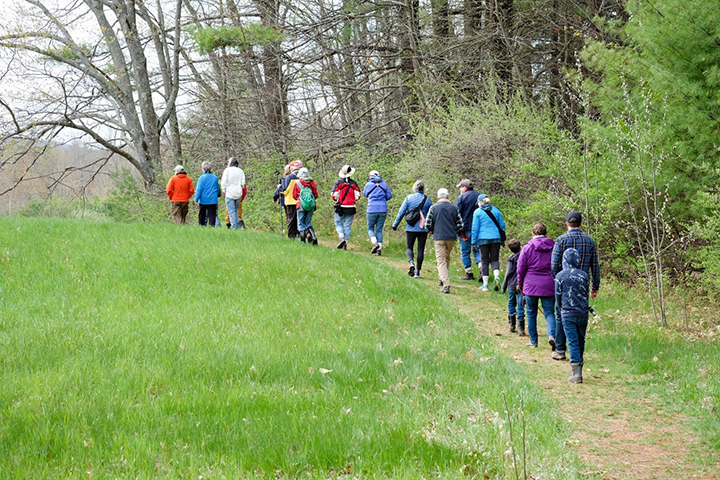
The Citizen Science at Great Works Regional Land Trust: An introduction to bird ID and eBird project will engage with volunteers, community members, and several partner organizations across a six-town region in a community-based science initiative. This project is intended to introduce the regional community to bird identification on Great Works Regional Land Trust (GWRLT) preserves and connect community members with eBird, establishing a routine protocol to submit observations of bird species and other relevant factors, to track changes over time, and inform conservation decisions for GWRLT. Through this project, GWRLT will create a free community bird identification series to introduce families and individual community members to bird watching across 20 GWRLT preserves. To pair, GWRLT will provide eBird tutorials for volunteers and community members to ensure individuals can submit and share their data, not only from group outings but also individually as they take to bird-watching on their own. The long-term goal of this project is to foster a sound conservation ethic along with positive stewardship values and attitudes, with the hope that community members will take their knowledge home and practice positive stewardship behaviors in their own life and backyard. GWRLT hopes to understand changes in species diversity given changes over time with land use and climate and use collected data to inform conservation decisions and update priority areas within its conservation plan.
Land Trust of North Alabama (Alabama), $5,000
The Land Trust of North Alabama (LTNA) will partner with Alabama A&M University (AAMU), Tennessee Valley Audubon Society (TVAS), and North Alabama Birdwatching Society (NABS) to establish a bird habitat demonstration and education site on the land trust’s 360-acre Chapman Mountain Nature Preserve through the Building a Community of Bird Enthusiasts through Conservation Planning project. This bird demonstration site will be used to conduct workshops to educate the community on bird identification, backyard habitats, and the collection of bird data using eBird, while also showcasing interpretative signs about problems with invasive plant species and native plants that provide cover and food for birds. Volunteers from AAMU, TVAS, NABS, along with both expert and newly-trained community volunteers will then use their eBird knowledge to record bird data during bio-blitzes hosted on four LTNA nature preserves (Bethel Spring, Wade Mountain, Harvest Square, and Chapman Mountain). Information gathered during these events will bolster historic birding data collected on these properties and will be used to prioritize and drive future bird conservation projects on LTNA nature preserves. Hallie Porter, LTNA’s Development Director, said “We are thrilled to partner on a project with the Cornell Lab this year. This grant will act as a catalyst, bringing members of the community together to further bird-based conservation activities on land trust nature preserves.”
Lower Shore Land Trust (Maryland), $5,000
The Lower Shore Land Trust (LSLT) and Eastern Shore Land Conservancy (ESLC) are partnering to strengthen bird conservation on the Delmarva Peninsula. Collectively, these land trusts have protected over 86,000 acres of land on the Eastern Shore on over 400 individual properties. The partners will collaborate on strategic and innovative outreach activities to engage new volunteers in meaningful stewardship of conservation lands and effectively market restoration programs to conservation landowners. This Strategic Partnership Development to Strengthen Bird Conservation on the Delmarva Peninsula project will highlight regional restoration efforts being implemented by conservation partners through panel discussions and site visits, and provide trainings geared toward land trust staff, volunteers, and interested members of the community. Participants will learn about leading-edge restoration practices for Northern Bobwhite, American Black Duck, Salt Marsh Sparrow, and colonial nesting birds. Outreach materials will be developed and distributed to landowners and resource managers to emphasize habitat needs and available conservation and cost share programs. Through these focused programs and outreach efforts, partners aim to increase awareness of the challenges to bird populations and of the actions being implemented to counter these declines. Larisa Prezioso, ESLC Restoration Specialist, and Kate Patton, LSLT Executive Director, stated, “Both organizations recognize one of the strongest connections between people and the landscape is wildlife, with birding and waterfowl hunting being key recreational draws for the Delmarva region. ESLC and LSLT appreciate Cornell’s support to not only continue bird conservation and habitat restoration in the region, but also in sustaining the connection between people and birds that is important to Eastern Shore culture.”
Raritan Headwaters Association (New Jersey), $5,000
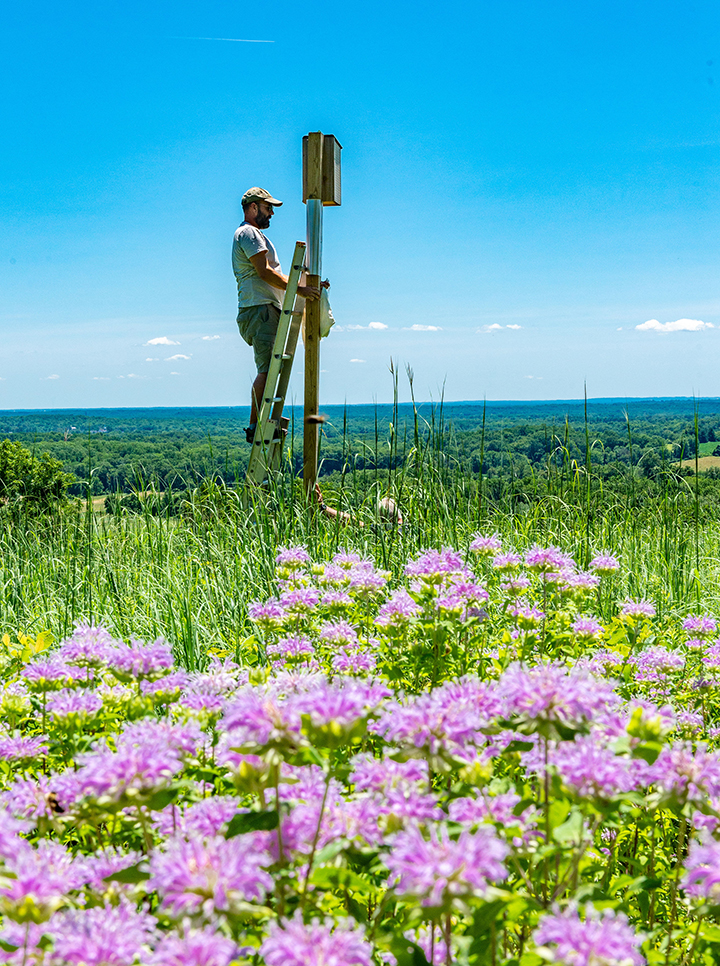
Through the Headwaters Kestrel Partnership, the Raritan Headwaters Association (RHA) will work with New Jersey Division of Fish and Wildlife’s Endangered and Nongame Species Program (ENSP) to engage private landowners and land trusts to help in the recovery of the American Kestrel by participating in a nest box program and employing best management practices on their lands throughout the Upper Raritan region of New Jersey. American Kestrels are currently listed as a threatened species in New Jersey; over the past 50 years, kestrel populations plunged by over 80 percent in the northeastern United States. There are likely multiple causes for this decline but a loss of suitable nesting cavities in open habitats is one that is easily remedied by providing nest boxes. Crucial support from a Cornell Land Trust Small Grant will help RHA identify and prioritize key kestrel habitat in the region, cultivate successful partnerships with other stakeholders to preserve suitable open space for kestrels; encourage stewardship through outreach events; develop and promote best management practices on working lands; and install and monitor kestrel boxes to aid in the recovery of kestrels. This project will also emphasize the value of open space as habitat for a diversity of birds utilizing eBird to collect and share bird sightings associated with kestrel habitat. Kristi MacDonald, RHA’s Director of Science and Stewardship, notes, “The American Kestrel truly is a watershed ambassador, acting as a charismatic flagship species for broader conservation efforts. This project promotes the understanding that what we do on the land impacts wildlife, water resources, and ultimately, people.” RHA’s project aims to increase kestrel populations, other species that rely on open habitats, and improve overall watershed health throughout the region and beyond.
Sierra Foothill Conservancy (California), $5,000
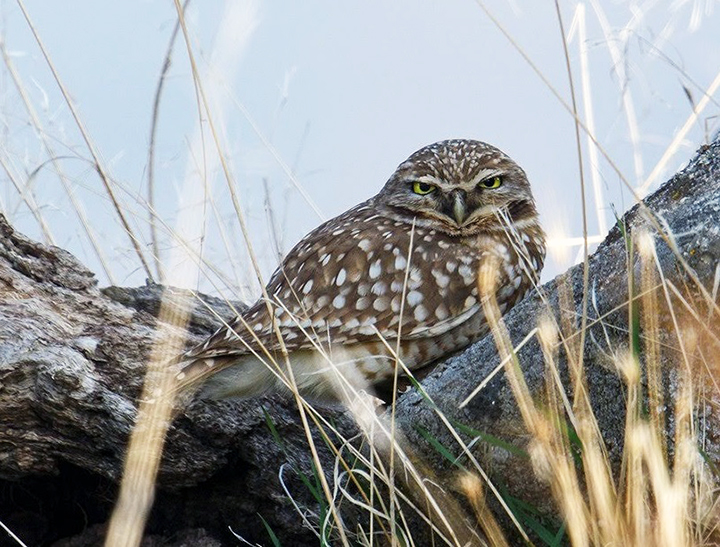
Through Strategic Planning for Land Acquisition Projects in the Sierra Nevada Foothills with eBird, Sierra Foothill Conservancy (SFC) will incorporate information from eBird into its Working Lands Conservation Strategy. This Strategy, originally funded by the California Department of Conservation, is designed to prioritize agricultural conservation easement acquisition projects and will result in a toolkit to strategically assess and prioritize high-impact working landscapes for conservation. “We are grateful for the Cornell Land Trust Small Grant funding to enrich our Strategy for pursuing new conservation projects with eBird,” says SFC’s Conservation Director, Lauren Miller. “This grant and data will help us build capacity to strategically pursue conservation easement projects that protect bird habitat and provide other co-benefits while conserving the legacies of working rangeland in the Sierra Nevada foothills.” Bird species occurrences reported by eBird users are valuable, unique data that can shed new light on opportunities to conserve essential bird habitat, a co-benefit of conserving agricultural working landscapes. The increased capacity provided through this grant to understand bird species occurrences and trends will ultimately be leveraged to conserve thousands of acres of important lands across SFC’s service region, which spans from the eastern edges of the San Joaquin Valley up the western slopes of the Sierra Nevada between Yosemite and Sequoia National Parks. These landscapes provide habitat for special-status and migratory bird species along with many other key endemic species, as well as numerous invaluable ecosystem services for the region. We intend to share our data-driven approach with other land trusts in the surrounding area to provide a grassroots model for prioritizing projects that will achieve the greatest conservation impact.
Wood River Land Trust (Idaho), $5,000
The Wood River Land Trust (WRLT) was founded in 1994 to protect and restore land, water, and wildlife habitat in southcentral Idaho. Supported by a Cornell Land Trust Small Grant, Creating a Framework of Community Scientists to Increase Wood River Land Trust’s Capacity for Collecting Long-Term Bird Data will increase the capacity of WRLT through formal training of local citizen scientists to collect standardized bird data to aid the planning and evaluation of management and restoration activities on nature preserves. Professional biologists from their partner organization, The Intermountain Bird Observatory, will teach community scientists and WRLT staff bird identification techniques, how to set up biologically appropriate bird surveys, and methods for recording data in eBird through a series of workshops. Then the recently trained community scientists will collect baseline bird data in a meaningful, standardized way on five of WRLT nature preserves or project areas that are slated for restoration efforts. This will set up a bird monitoring framework for WRLT and give citizen scientists the skills necessary to continue surveys to help evaluate restoration activities and strategically guide planning efforts in the future. “We are so excited to have our local citizen scientists involved and are grateful for this funding that is critical to establishing a long-term bird monitoring program!” said WRLT Lands Program Director Keri York, “This grant will enable the involvement of our community in monitoring bird populations on our nature preserves and restoration projects for years to come.”



